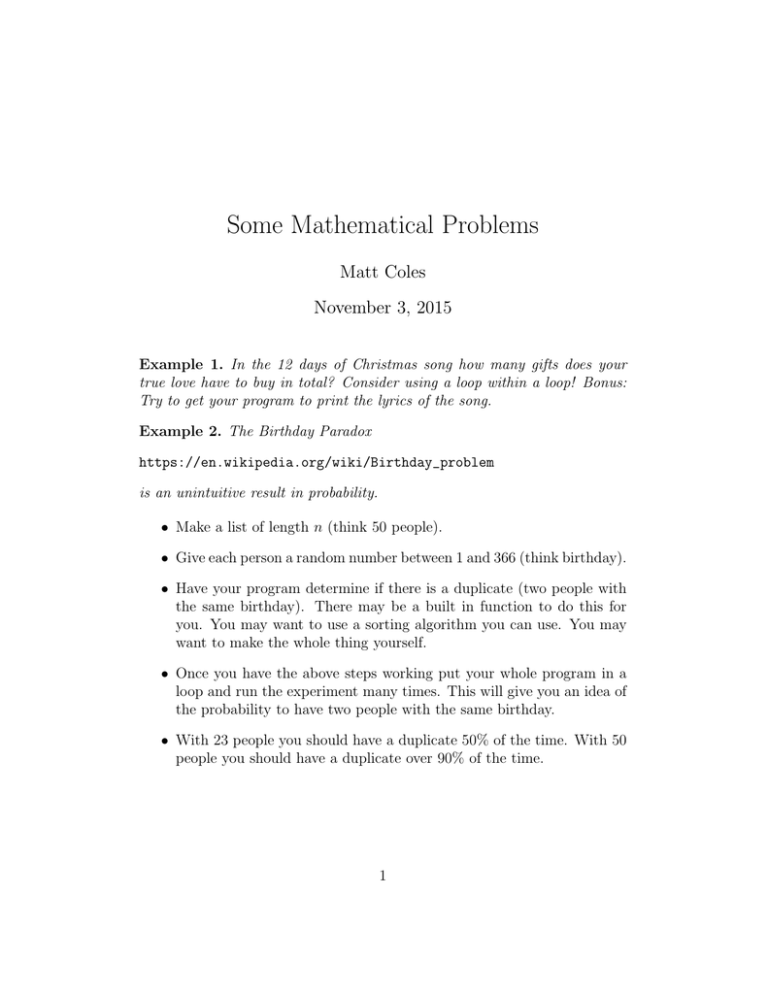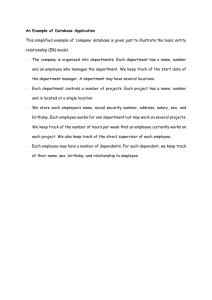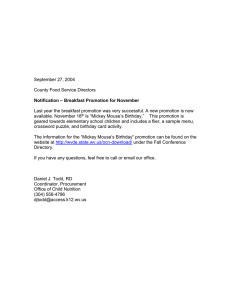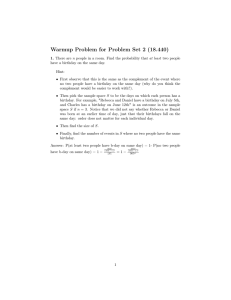Some Mathematical Problems Matt Coles November 3, 2015
advertisement

Some Mathematical Problems Matt Coles November 3, 2015 Example 1. In the 12 days of Christmas song how many gifts does your true love have to buy in total? Consider using a loop within a loop! Bonus: Try to get your program to print the lyrics of the song. Example 2. The Birthday Paradox https://en.wikipedia.org/wiki/Birthday_problem is an unintuitive result in probability. • Make a list of length n (think 50 people). • Give each person a random number between 1 and 366 (think birthday). • Have your program determine if there is a duplicate (two people with the same birthday). There may be a built in function to do this for you. You may want to use a sorting algorithm you can use. You may want to make the whole thing yourself. • Once you have the above steps working put your whole program in a loop and run the experiment many times. This will give you an idea of the probability to have two people with the same birthday. • With 23 people you should have a duplicate 50% of the time. With 50 people you should have a duplicate over 90% of the time. 1 Example 3. Root Finding by Bisection. Suppose we want to find the solutions to 0 = x3 − 3x2 + 1. Observe that this is the same as finding the zeros/roots of the graph y = x3 − 3x2 + 1. Notice also that when x = 0 we get the following y value y = 03 − 3(0)2 + 1 = 1 and for x = 1 we see y = 13 − 3(1)2 + 1 = −1. So, the y value is positive at x = 0 and negative at x = 1. We suspect that the y value will be zero somewhere between x = 0 and x = 1. Let us investigate the y value when x = 0.5 y = (0.5)3 − 3(0.5)2 + 1 = 0.375 and so we have a positive y value at x = 0.5. Therefore, we expect the root to be between x = 0.5 and x = 1. When we started we knew the root was between 0 and 1 but now we know it to be between 0.5 and 1. Write a program that performs this ‘bisection’ method a couple of times and narrows the range in which the zero lies. Check your answer with wolfram alpha. 2





![You`re invited to celebrate [child`s name]`s birthday at SCRAP! What](http://s3.studylib.net/store/data/007177272_1-c15601fb9e11b26854f13f1982e634e8-300x300.png)
